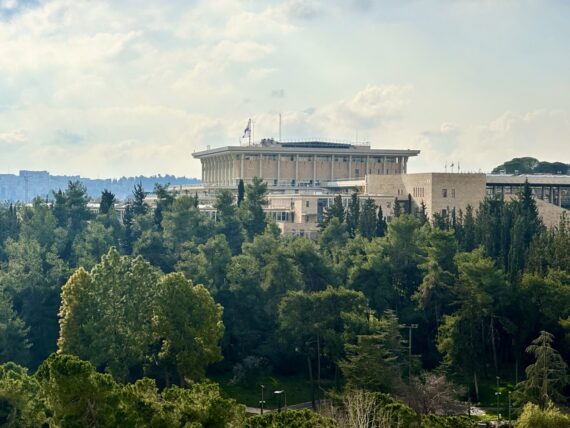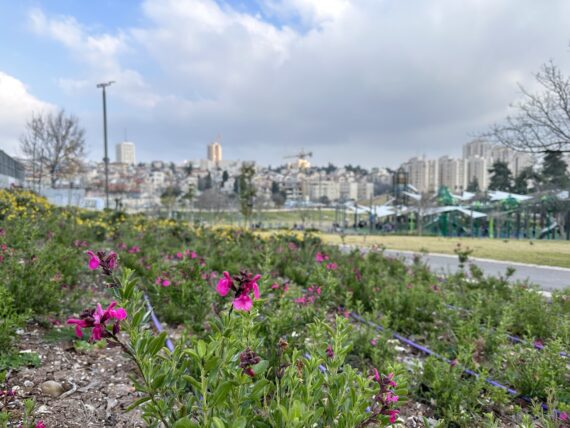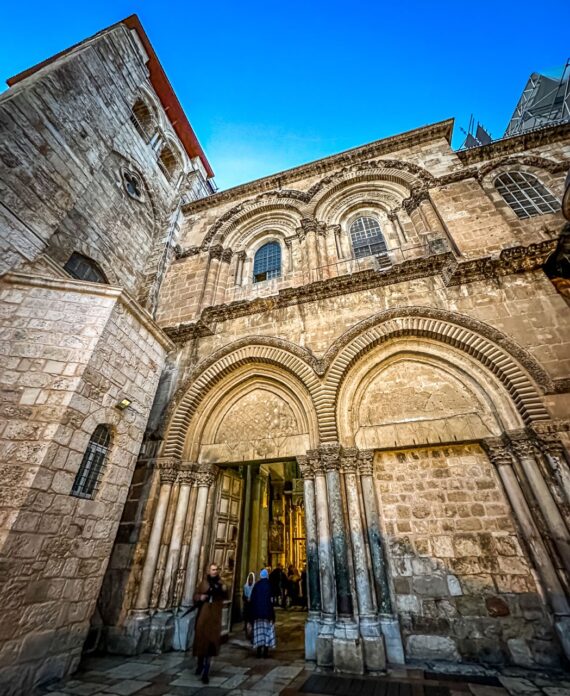Jerusalem is one of the most unique and diverse places to visit in the world. With a rich history and culture spanning thousands of years, it offers visitors a chance to explore an array of historical, cultural, and natural sites. While there are plenty of paid tours and attractions to choose from, FIT (Fully Independent Travelers) can also experience the city on their own and for free. In this article, we will highlight 9 places in Jerusalem that visitors can visit independently and free of charge, including bird watching near Rose Park, the Knesset (Israel's parliament), Gan Saker Park, the Western Wall, the Temple Mount, the Church of the Holy Sepulchre and Via Dolorosa, the Mifletz playground, the First Train Station, and David Grossman's “Someone to Run With” Audio Visual Tour.
Bird Watching near Rose Park
Jerusalem Bird Research Station offers a variety of coordinated activities for groups of tourists, students, and families. Visitors can participate in bird watching up close, guided tours of urban nature sites, an observation tour of the station grounds, plantings, and view art at the Gail Rubin Wildlife Art Gallery. The station is suitable for all ages, wheelchair accessible, and offers an evening activity option with a night safari. Visitors can park at nearby Cinema City and use public transportation.
Visitors are expected to follow behavior rules to ensure the safety of the animals and other visitors. On-site trainings may be held by station staff during regular hours. The visitor center is open to families and independent travelers without appointment on Sunday-Thursday from 09:00-15:00, and the bird watching station is open 24/7 free of charge.
The Knesset: Israel's Parliament
The Knesset Visitor Center invites you to witness Israeli democracy in action by offering free tours and activities for visitors. The tours cover the nature of Israeli democracy, the Knesset's roles and responsibilities, and works of art displayed throughout the building. The tour includes visits to the Knesset Committees Wing, the Plenary Hall, Chagall Hall, and the exhibit of Israel's Declaration of Independence.

Knesset means "assembly" or "the gathering". View from afar. Fot. Tomek Darda.
Individuals and small groups can join general tours on Sundays and Thursdays without reservations, while groups of ten or more must reserve a tour in advance through the Visitor Center Reservations Department. The tour lasts approximately one hour and is conducted in Hebrew, Arabic, English, French, and Russian. The Knesset Visitor Center is committed to ensuring accessibility for visitors with special needs. Visitors must present a passport or Israeli ID card to enter the Knesset.
Gan Saker Park
Saker Park, located in the heart of Jerusalem, offers visitors a variety of recreational activities for free. The park is the largest developed green space in the city and boasts facilities such as basketball, soccer, and tennis courts, a bike path, a skateboarding area, and a children's playground. The park was recently renovated with upgrades including new seating areas, street furniture, faucets, and a 1,700m running path.

Flowers in... February 2023. Gan Saker Park. Fot. Tomek Darda.
Visitors can also enjoy a unique playground with facilities. The playground is over three dunams and includes a wide range of games and swings of varying heights, including a specially adapted facility for children with disabilities. Additionally, a sports complex that includes combined football and basketball courts, and a skate park. Saker Park offers something for everyone and is a great place to spend time with family and friends outdoors in the center of the city.
The Western Wall
The Western Wall, also known as the Wailing Wall, is one of the most significant religious sites for the Jewish people and a major tourist attraction in Jerusalem. It is known as one the the last remaining part of the Temple Mount complex, which was built by King Herod at the end of the first century BCE. The Wall serves as a symbol of the Jewish people's connection to their ancient history and religion. It is a place of pilgrimage for Jews from all over the world, who come to pray. The Wall is visited by millions of tourists every year, making it one of the most popular tourist destinations in Jerusalem.
The Western Wall is not only a holy place but also an important historic heritage site. It stands as a testament to the rich cultural and religious history of the Jewish people, dating back over 2,000 years. The Wall has survived numerous invasions, destruction, and reconstructions, making it a remarkable landmark that tells the story of the Jewish people's resilience and survival. Today, visitors can approach the Wall, touch the ancient stones, and even say a prayer or write a note and place it in the cracks of the Wall. With free access 24/7 and no admission fee, the Western Wall is open to all who wish to pay their respects and experience its spiritual significance. Visitors are expected to respect the religious rules at the site, including a modest dress code and head covering or kipa for men. No photos allowed on Shabbat.

Faithful gathering at the Western Wall before the Shabbat. Fot. Tomek Darda.
The Temple Mount
The Temple Mount is the most holy place for Jews and the third most holy place in Islam. It is the location of the Al-Aqsa Mosque and the Dome of the Rock, which are two of the most important Islamic holy sites. The Temple Mount is administered by the Islamic trust called the Wakf, which manages the religious activities on the site. Non-Muslim visitors are allowed to visit the Temple Mount, they can enter only through the Mugrabi gate near the Western Wall, and follow strict rules and regulations during their visit. Modest dress is required, and visitors are not allowed to bring any non-Islamic religious items or alcohol onto the site.
Visiting the Temple Mount is a unique experience, allowing visitors to witness the complex interplay between Judaism and Islamic religion, history and traditions. It is a place of great spiritual significance and has been the site of many historical events. Non-Muslim visitors can explore the vast open plaza, view the impressive architectural features of the Al-Aqsa Mosque and the Dome of the Rock, and learn about the site's rich history. Visiting the Temple Mount can be a deeply moving, spiritual and even thought-provoking experience, offering visitors a glimpse into the heart of the world's two major Abrahamic religions.
The Church of the Holy Sepulchre and Via Dolorosa
The Via Dolorosa and the Church of the Holy Sepulchre are two of the most significant religious and historic sites in Jerusalem. The Via Dolorosa represents the path that Jesus Christ is believed to have taken on his way from his trial to his crucifixion. It passes through 14 stations along several streets in the Muslim and Christian quarters of the Old City of Jerusalem and provides a unique opportunity for Christian pilgrims and those interested in history and religion to walk in the footsteps of Jesus. The Church of the Holy Sepulchre is found at the end of the Via Dolorosa and is believed to be the site of Jesus' crucifixion, burial and resurrection. It is the most important pilgrimage site in the world for Christians.

Church of the Holy Sepulchre. Fot. Tomek Darda.
Both the Via Dolorosa and the Church of the Holy Sepulchre are open to the public at no cost, and they offer visitors a unique and moving experience. Walking the Via Dolorosa allows visitors to experience the bustling Arab markets of the Old City and to witness the interplay between different cultures and religions. The Church of the Holy Sepulchre is an awe-inspiring structure that houses several significant religious sites, including the Stone of Anointing and the Tomb of Jesus. Visiting these sites can be a deeply moving experience that offers a unique insight into the history and culture of the Middle East, making it a must-see for anyone interested in religion, history, and culture.
The Mifletz playground
HaMifletzet playground in Jerusalem's Kriyat Hayovel neighborhood is a unique and exciting attraction for families with children. The Jerusalem landmark playground features a huge sculpture of a black and white colored monster with three bright red slides coming out of its mouth that look like tongues. The monster is designed to stimulate children's imagination and creativity, and provide them with a safe and fun environment to play and explore. The playground is a public park with no admission fee and is accessible by bus and light rail, making it a popular destination for families from all over the city.
HaMifletzet playground is more than just a play area; it is a work of art that adds to the beauty and vibrancy of the neighborhood. The playground is a great example of how art and play can be combined to create a unique and engaging public space. The playground is surrounded by green areas, benches, and picnic tables, providing families with a perfect spot to relax and enjoy the outdoors. With its distinctive design and vibrant colors, HaMifletzet playground is a must-visit destination for families visiting Jerusalem.
The First Train Station
The historic First Station in Jerusalem has undergone a transformation from a dormant railway station to a bustling commercial leisure complex. The site now features restaurants, cafes, and amusement activities for families with kids, making it a popular destination for locals and tourists alike. Often the center stage hosts events and live music, creating a lively atmosphere for visitors to enjoy. The First Station is open to the public and is dotted with signs featuring historic pictures and text telling the story of the train from Jaffa to Jerusalem, adding a touch of history and culture to the area.
The First Station is a prime example of how historic landmarks can be repurposed for modern use, while preserving their historical significance. The complex has retained its architectural charm, with the original train tracks and station building still visible and now repurposed as frames for wooden deck walkways. The addition of new amenities and activities has breathed new life into the area, providing visitors with a unique and enjoyable experience. Whether it's a family outing or a night out with friends, the First Station has something for everyone.
David Grossman's Someone to Run with Audio Visual Tour
The Jerusalem municipality tourism agency has introduced a unique and interactive tour based on the events of the book "Someone to Run With" by Israeli author David Grossman. The book tells the story of runaway teens who live on the streets of Jerusalem's city center. The tour takes visitors through popular sites that locals and tourists pass by regularly, giving them a glimpse into the lives of the characters in the book. The stations of the tour feature colorful drawings with text and barcodes that visitors can scan with their phone to hear narrators reading segments of the book, providing commentary and connections to the site visited.
The "Someone to Run With" tour is a great way for visitors to experience Jerusalem in a unique and engaging way. It offers a fresh perspective on the city's history and culture, while also highlighting the social issues that affect the city's youth. The tour is free to use and enjoy, making it accessible to everyone. Whether you're a literature enthusiast or just looking for a new way to explore Jerusalem, the "Someone to Run With" tour is definitely worth checking out.
Jerusalem is a place where visitors can explore a wealth of history, culture, and nature for free. In this article, we have highlighted nine places that visitors can explore on their own, including bird watching near Rose Park, the Knesset (Israel's parliament), Gan Saker Park, the Western Wall, the Temple Mount, the Church of the Holy Sepulchre and Via Dolorosa, the Mifletz playground, the First Train Station, and David Grossman's Someone to Run with Audio Visual Tour. While there are plenty of paid tours and attractions to choose from, FIT (Fully Independent Travel) visitors can also experience the city on their own and for free. However, it's worth noting that a professional guide can provide valuable insights and context to these sites, so don't hesitate to book your tour with us. Whether you decide to visit with a guide or explore on your own, Jerusalem is a city that will leave you with unforgettable memories.
----
David Ha'ivri is a professional tour guide based in Jerusalem, Israel. He has been guiding visitors to Israel for over 20 years, providing unique and informative tours of the country's beautiful nature trails, its historical and religious sites.
David is known for his passionate and engaging tours, which provide visitors with a deeper understanding of Israel's rich history and complex political landscape.
* The status of Jerusalem is disputed: the state of Israel recognizes the city as its capital with the seats of the president, the government and the parliament located there. This status is not recognized by the majority of the UN countries, though. The city is also claimed by Palestine as its capital.



